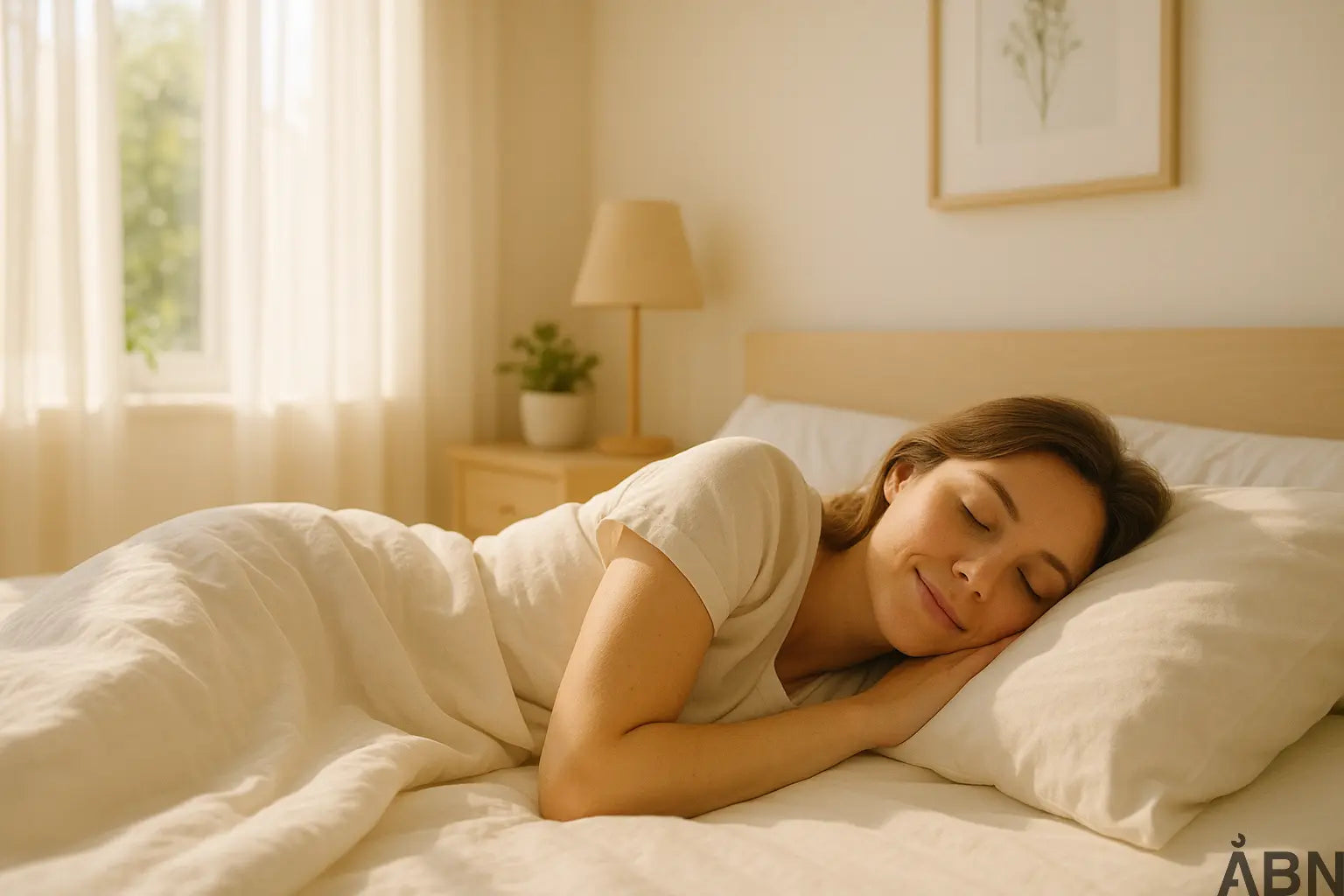This is the optimal temperature for your bedroom
Imagine a quiet night, where you drift off into a deep, undisturbed sleep. You wake up refreshed, ready for a new day – not because you slept long, but because you slept well. One of the most underestimated factors behind good sleep is the temperature in your bedroom. The optimal temperature in your bedroom is not just a matter of comfort – it’s about health, well-being and ultimately performance, for children, adults and employees alike.
At ÅBN, we work every day to make indoor climate understandable and tangible – not least when it comes to sleep and recovery. In this article, we delve into what the optimal temperature in the bedroom is, why it matters, and how you – as a parent, decision-maker or facility manager – can ensure the best environment for sleep and well-being.
Why is bedroom temperature important?
Sleep is the body's natural way of recharging itself. When we sleep, our body temperature naturally drops by about 1 degree. This helps us fall asleep and stay in the deep sleep phase, where the body recovers and the brain processes the day's impressions. If the environment is too hot or cold, it can disrupt this process and lead to restless sleep, frequent awakenings or reduced sleep quality.
According to Videnskab.dk and other Danish sources, there is agreement that room temperature plays a crucial role in sleep quality. So it's not just a subjective feeling - it's documented knowledge.
The optimal temperature in the bedroom – what does the research say?
There is no one universal temperature that applies to everyone, but research points to a clear range for most adults:
- 15–22 °C : The broad range where most people sleep well.
- 16–18 °C : The most recommended range for optimal sleep quality.
- 16–20 °C : A good compromise between comfort and physiological recovery.
According to Bedre Nætter and avXperten , 16–18 degrees is the most ideal for adults, but this of course varies with age, health and individual preferences. For infants and the elderly, a slightly higher temperature may be appropriate.
Individual differences and needs
We are not all the same – and that also applies when we sleep. Some people freeze easily, while others throw off the covers during the night. That is why it is important to create flexible frameworks where you can adjust the temperature as needed. This can be especially relevant in institutions, schools and larger buildings where many people move and rest in the same room.
Here, technology that measures and visualizes the indoor climate can make a big difference. With solutions like ÅBN's intuitive sensors and dashboard, you can easily monitor whether the temperature in a room supports good sleep and well-being – and act on it.
How to create the optimal sleeping environment
Getting the temperature right isn’t just a matter of turning up the thermostat. It’s about the whole room. Here are some concrete tips you can use – both at home and in institutional settings:
1. Blackout and insulation
A dark room helps the body produce melatonin – the sleep hormone. Use blackout curtains and make sure windows and walls are well insulated to keep the temperature stable throughout the night.
2. Adjust the thermostat in the evening
Our body temperature naturally drops at night. By lowering the temperature in your bedroom to around 16–18 degrees, you help your body get into the right sleep rhythm. You can use a timer to automatically lower the temperature in the evening and raise it again in the morning.
3. Use cooling bedding and mattresses
Materials matter. Choose breathable and temperature-regulating bedding that draws heat away from the body. This also applies to the mattress – some modern materials can actually help keep the body cool all night.
4. Ventilation and humidity
A poorly ventilated room can quickly become too hot or humid. Ensure good ventilation – preferably with a cracked window or a mechanical ventilation system. The ideal humidity is between 40–60%. Too high a humidity can lead to discomfort and mold, while too low a humidity can dry out the mucous membranes.
With ÅBN's solution, Skyen, you can get a clear overview of both temperature and humidity in real time. This makes it easy to monitor and ensure that the indoor climate supports good sleep – both at home and in professional contexts.
The importance for children and young people
Children need more sleep than adults – and they are more sensitive to temperature fluctuations. Parents can therefore benefit from paying extra attention to the indoor climate in the child's room. Especially in institutions and schools, where children rest or sleep for dinner, it is important to ensure stable conditions.
A room that is too warm can lead to restless sleep and reduced concentration the next day. This applies not only at home, but also in daycare centers and schools, where the indoor climate has a direct impact on children's learning and well-being.
At ÅBN, we work closely with schools and municipalities to create better indoor climates – and we have documented how behavioral changes and data visibility can make a noticeable difference. See more in our documentation on behavioral change .
Indoor climate and sleep in professional environments
It's not just at home that sleep and recovery are important. In business and the public sector, the indoor climate also plays a major role – especially in residential institutions, hospitals, nursing homes and schools, where people sleep, rest or stay for long periods of time.
Facility managers and decision-makers should therefore consider how to optimize the indoor climate, not only in terms of ventilation and energy consumption, but also in terms of sleep and well-being. With technological solutions that make data about temperature and air quality accessible and understandable, informed decisions can be made more easily.
Read more about how ÅBN's solutions visualize indoor climate and support healthier environments on our platform for professionals .







